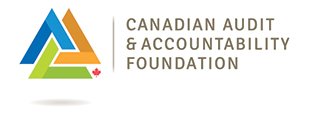September 29, 2021

Sampling is the selection of a subset of the totality of elements that could be analyzed, called the population. It can be generalizable, i.e., drawn randomly in order to efficiently extrapolate the results to the population, or purposeful, i.e., based on a rational argument linked to the audit objective, in order to provide insights on the nature or cause of a problem. The following success factors contribute to optimize your sampling approach and minimize your risks that the sampling procedures performed will not detect a significant deviation.
Ensure that the right expertise is availableAn audit team that does not have enough expertise on sampling may fail to consider an important aspect when developing a sampling plan or it may apply a rule of thumb in selecting a sample size without fully understanding all the implications. A lack of expertise may result in using an inadequate sampling methodology and producing audit observations that cannot be used for the intended purpose, therefore potentially wasting precious time and money. For these reasons, the level of expertise required should be assessed in the early phase of an audit. If possible, targeted training or hiring an expert or academic on contract to advise on or validate the sampling approach selected can help. |
|
Verify the quality of the dataData quality is also an important success factor. A successful sampling exercise is highly dependent on accurate and complete data. Without such data, sampling cannot result in reliable and credible observations. Deliberate steps must be taken to:
|
|
Determine the right sample sizeSample size is also a critical success factor. Samples that are too small may result in findings that are easily challenged. Conversely, samples that are too large may result in dedicating too many resources to a specific line of enquiry in a performance audit, thereby decreasing the budget available for other lines of enquiry or other audits. Determining the right sample size to provide the information required to address a specific audit question is therefore a crucial technical issue that must be resolved by audit teams. |
|
Manage the complexity of the sampling methodologyA complex sampling methodology, although sometimes necessary, may increase the risks for your audit. This is because as a sampling methodology becomes more complex, it may also become more difficult to implement properly or to explain findings in plain language to the auditees, parliamentarians, or other actors. This has an impact on the ability to defend the resulting audit observations. It may also become more difficult to clearly state the methodology and its results in the final audit report. In contrast, simple and straightforward sampling methodologies are easier to explain and less likely to be successfully challenged by the auditees but are also less illuminating. Weigh the pros and cons and select the approach that works best for you. |
Liked it?
Another way to ensure that you are successful when you are sampling for performance audits is to access the methodological tools, resources and suggestions provided in our Practice Guide to Sampling Methodology for Performance Audits.
See more Audit Tips


